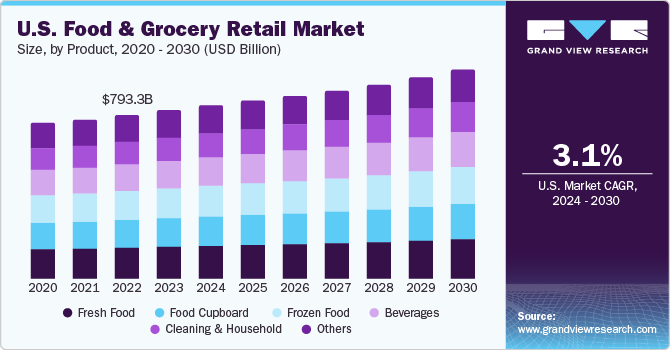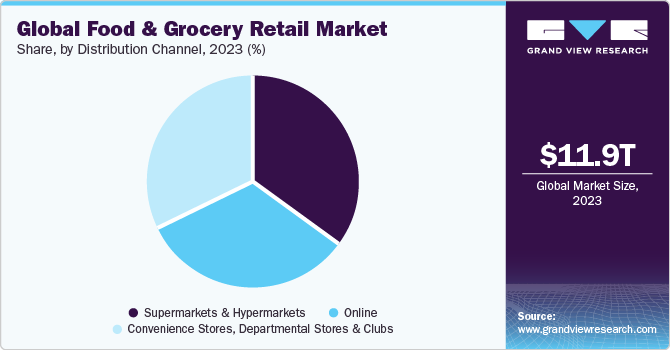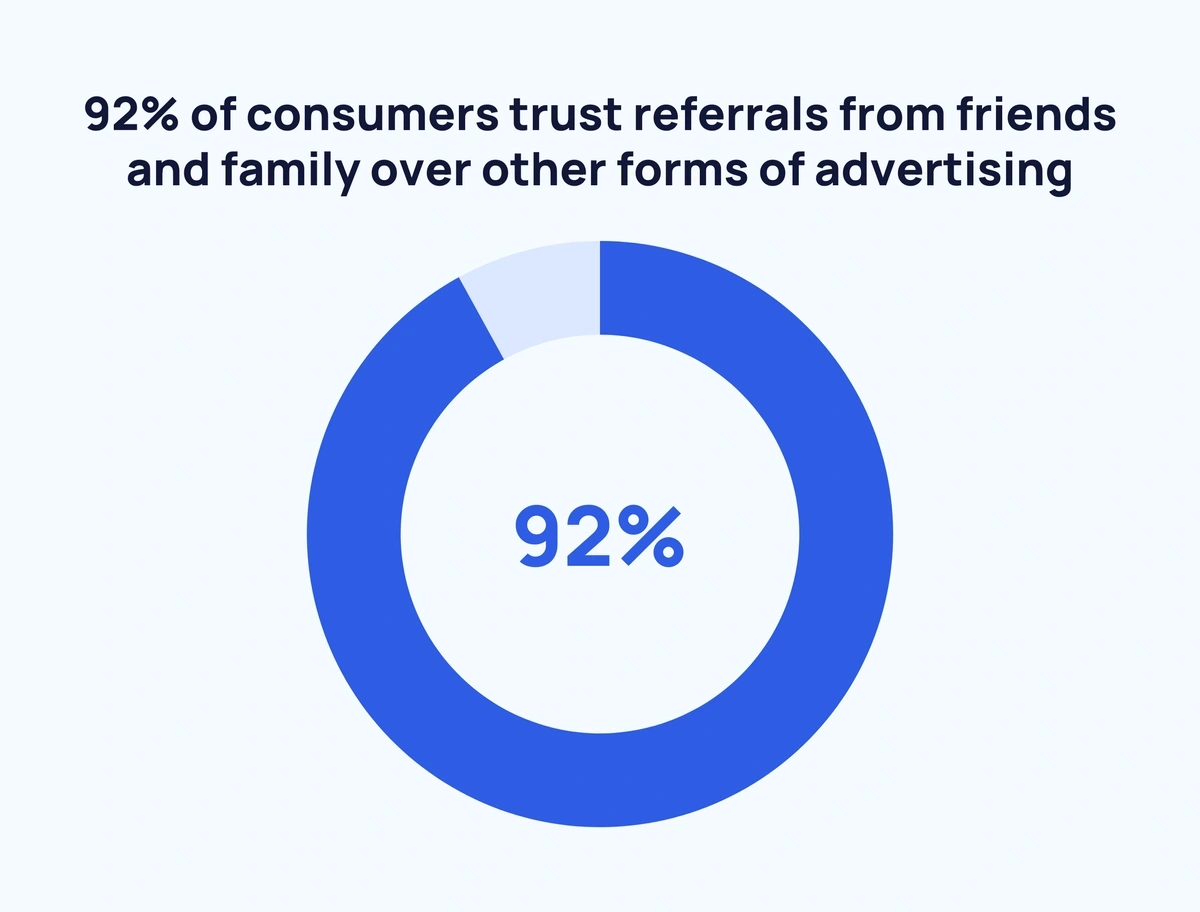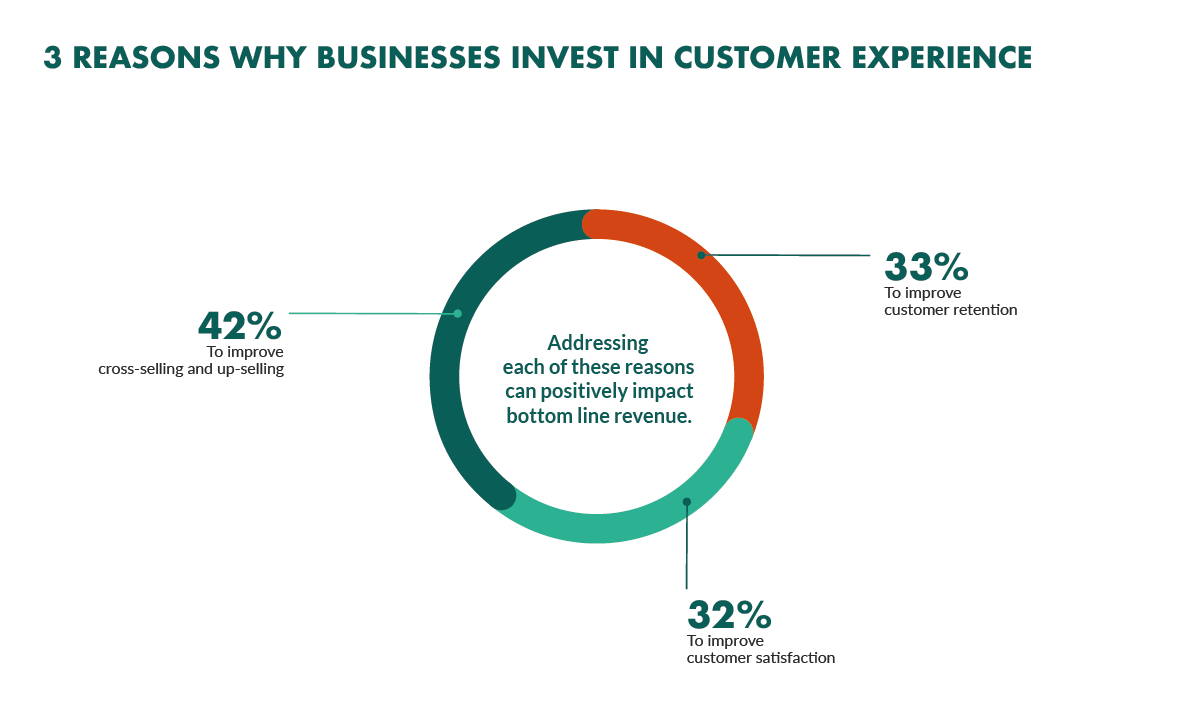The grocery store industry is constantly on the rise. In 2022, the market reached $8,695 billion. With a compound annual growth rate (CAGR) of 6.9% projected from 2022 to 2030, now is a great time to get involved.

As more consumers seek healthy, organic, and locally sourced products, small grocers can carve out a niche and compete with giants like Walmart and Kroger. Meal kit delivery services are especially popular. Whether focusing on specific products, personalized shopping experiences, or ultra-convenient ordering and delivery, creative approaches can help new grocery stores thrive.
This guide offers insight into how to start grocery store of your own. Topics include market research, competitive analysis, marketing, customer focus, registering an EIN, and more. Here’s everything you need to develop your grocery store business plan.
1. Conduct Grocery Store Market Research
Market research is integral to starting a successful grocery business. Grocery store owners use market research to learn about the target market, local saturation, and trends in products and services.

Some details you’ll learn through market research for your own grocery store include:
- The first step is analyzing area demographics and psychographics.
- Factors like population density, age distribution, household income levels, and lifestyle segments shape grocery shopping habits and unmet needs.
- For example, a young urban area with many millennials may present opportunities for specialty stores focused on organic, locally sourced food.
- Regions with large immigrant populations might lack grocery options catering to their traditional cuisines.
- Tools like Esri Tapestry segmentation allow drilling down into hyperlocal lifestyle groups to reveal such openings.
- Understanding competitive forces is also key.
- Research existing grocery stores within a 20-minute drive radius using tools like Google Maps.
- Assess their positioning, product range, price points, store formats, and services.
- Analyze customer reviews of competitors online to identify major pain points.
- Long wait times, poor-quality produce, and limited healthy/organic options are common complaints that present opportunities.
- Surveying neighborhood residents also uncover unmet needs.
- Approximate capital requirements factor in building improvements, equipment purchases, licensing, inventory, and more.
With diligent upfront and ongoing research using the best available data sources, grocers can strategically position themselves, identify customer niches to serve, set competitive pricing, select optimal locations, secure financing, and continually refine operations to find sustainable success.
2. Analyze the Competition
Carefully scrutinizing the competition is vital for any aspiring grocery store owner. This enables identifying key competitors, understanding their positioning and strengths, and pinpointing vulnerability gaps. Every great business idea starts with a solid competitive analysis to uncover trends, resources, and insider knowledge.
- For brick-and-mortar locations, physically visit competitor stores within a 20-minute drive radius. Analyze product range, departments, store flow, signage, and displays.
- Document pricing on best-selling items for comparison.
- Study their prepared foods offering along with bakery and specialty departments that drive traffic. Eavesdrop to assess customer service.
- Capture photos documenting store interiors and exteriors.
- Long wait times produce quality issues, and limited organic selection presents prime opportunities.
- Google the competition to analyze their websites and menus if offering prepared foods or e-commerce.
- Review their social media presence as well on platforms like Instagram and TikTok.
- Assess their following, engagement levels, product promotions, and advertising campaigns.
- Analysis should feed into business planning by exposing unmet customer needs, pricing gaps, service shortfalls, store flow issues, and pressing pain points.
- It also informs site selection by revealing heavily saturated areas versus underserved neighborhoods.
- Ongoing monitoring helps adapt to competitor moves.
These assessment techniques enable new grocery stores to carve out strategic positioning and local customer niches that giant chain competitors may miss within smaller community contexts. It’s the key to going head-to-head with retail Goliaths and succeeding.
3. Costs to Start a Grocery Store Business
Starting a store in the grocery industry requires some spending. Startup and ongoing costs you’ll encounter throughout the life of your business are outlined below.
Startup Costs
Launching a grocery store incurs substantial upfront costs. Carefully estimating and budgeting for these expenses is imperative before taking the entrepreneurial leap.
- Store Layout and Build-Out – $200,000 to $500,000: Transforming retail space into a functioning grocery requires major renovations like flooring, lighting, decor, signage, and display fixtures.
- Commercial Equipment – $150,000 to $300,000: From refrigeration units and freezers to point-of-sale systems, grocery equipment carries major price tags. Proper refrigeration alone can cost over $100k.
- Initial Inventory – $100,000: Before opening doors, grocers must stock shelves. Inventory needs align with store size and concept.
- Licenses and Permits – $5,000 to $10,000: Grocers face complex health department regulations, food handling training rules, local business permits, and liquor licenses if selling wine/beer. Legal fees also add up.
- Point of Sale System – $1,000 to $5,000: Modern POS software and hardware improve customer experience while providing sales/inventory analytics. Cloud-based SaaS systems offer flexibility and value.
- Website and Marketing – $3,000 to $10,000: An online presence alongside local marketing outreach like mailers, pamphlets, and community sponsorships is essential, even for brick-and-mortar grocers.
- Initial Staffing – $30,000: Employing cashiers, butchers, produce experts, store managers, and janitorial help necessitate payroll budgets, even during lean first months.
Ongoing Costs
Ongoing overhead expenses must also be funded through operating income or external financing like small business loans. While individual costs fluctuate based on store volume, typical annual expenses may include:
- Rent/Mortgage – $24,000: Prime locations command steep rent. Mortgage payments for purchased buildings also represent major fixed costs.
- Payroll – $150,000: Staffing full- and part-time workers tallies at least $150k annually for small operations while larger grocers may employ 100 workers.
- Inventory – $100,000: Frequently restocking fresh produce, meat, dairy, and baked goods accumulates. Careful spoilage monitoring and inventory management optimize turnover.
- Maintenance, Janitorial, and Repairs -$12,000: Grocery store interiors see heavy foot traffic and equipment wear and tear. Preventative maintenance is key.
- Utilities – $24,000: Heating, cooling, powering, lighting, and cleaning large store footprints necessitate high electricity, water, and garbage bills.
With thin margins and intense competition, successful grocers must achieve sufficient store traffic and average basket sizes to cover hefty operating costs. Financial modeling based on local area benchmarks informs viability.
4. Form a Legal Business Entity
When launching a grocery store, the legal structure carrying the most protections is a limited liability company (LLC). Unlike sole proprietorships and partnerships exposing owners’ assets to business liabilities, LLCs establish legal separation.
Sole Proprietorship
A sole proprietorship simply denotes a business owner operating under their name without formal business registration. This offers ease of setup with minimal paperwork and legal obligations. However, the owner assumes unlimited liability for the company’s debts and legal disputes. Their personal and company assets are the same.
Partnership
Forming a general partnership distributes ownership and management across two or more partners. This allows the pooling of more startup capital and leadership abilities when launching a grocery store. Partners split profits equally or based upon predetermined ratios. Each partner also assumes full, joint, and separate liability.
Limited Liability Company (LLC)
Establishing an LLC combines personal liability protections with pass-through income tax treatment similar to partnerships. It limits legal disputes and creditor claims to the company only, shielding owners’ assets like homes and bank accounts. The flexible structure accommodates any number of owners with the customizable distribution of financial interests, voting powers, and responsibilities.
Corporation
A corporation is the most secure entity to start but also comes with the most complications. Paperwork is complex and the registration process is expensive. Corporation status protects your finances when professional incidents occur. However, they’re best suited to large companies.
5. Register Your Business For Taxes
As a brick-and-mortar retail business selling goods, grocery stores must obtain an Employer Identification Number (EIN) from the IRS and register with state tax authorities to collect and remit sales tax. These simple registration steps legitimize the business.
An EIN serves as a business’s social security number for tax purposes. Grocers need one even without employees. This ID number opens doors to business bank accounts, enabling accepting payments via debit/credit transactions. The EIN application takes just minutes online.
Simply navigate to IRS.gov and search “apply for an EIN”. Click the link to access the online EIN Assistant. Determine if you need an EIN by answering a few yes/no questions. When confirmed, hit “Apply Online Now” and establish an IRS account if you lack one. This allows for saving progress.
Next, choose your state/business type, entering details like legal name and mailing address. Select “View Additional Types, Including Tax-Exempt and Government Organizations” and choose “Grocery Store” as the activity/purpose. Add owners’ information and specify a desired start date.
After submitting, the EIN immediately displays on the IRS confirmation notice. Print this for your records alongside the assigned Taxpayer Identification Number (TIN) application confirmation. This may also verify business purposes when obtaining licenses. Total online processing takes less than 15 minutes with immediate access to your EIN.
Grocery stores must collect state sales tax on goods sold. Register through your state revenue or taxation department website to obtain necessary sales tax permits. Some states require separate city licenses too if stores operate within city jurisdictions assessing local sales tax. Stay compliant with all sales tax remittances and reporting for each business location to avoid financial penalties.
6. Setup Your Accounting
With tight margins in the grocery sector, meticulous financial tracking is imperative. From managing 100+ SKUs to preserving thin profit margins and monitoring inventory spoilage, accounting software proves essential.
Accounting Software
Rather than tracking piles of receipts and manually logging daily sales, QuickBooks seamlessly handles everything from processing payments to reconciling bank feeds, invoicing suppliers, tracking sales tax, and automating reporting. syncs inventory data, invoices, and bank/credit card feed into one centralized ledger.
Hire an Accountant
Hiring an accountant maximizes financial organization. They configure integrations with POS systems and supplier databases for further automation. Accountants also ensure full compliance with intricate grocery sales tax protocols across city, county, and state levels to avoid audits. Standard monthly bookkeeping fees range from $150-500 based on account complexity.
Open a Business Bank Account
Separating personal and business finances prevents untangling accounting headaches. Establish dedicated business checking/savings accounts and credit cards from opening day. Business credit cards like Capital One Spark Cash Plus offer 2% cashback on every purchase while fueling rewards points for further perks.
7. Obtain Licenses and Permits
Before welcoming the first customers, every grocery store must obtain all necessary business licenses and permits, including a retail food store license. Find federal license information through the U.S. Small Business Administration. The SBA also offers a local search tool for state and city requirements.
At a minimum, grocers need a state sales tax license and city business license to transact commerce lawfully. However, selling perishable goods like fresh produce, meat, dairy, and prepared foods requires further health department approvals. These county-level permits ensure proper training around safe food handling, storage, prep, and sanitization to prevent contamination and spoilage issues.
Common grocery store licenses and permits include:
- Food Establishment Permit – Grocers serving unpackaged foods like salad bars, hot bars, or in-store cafes require health inspections and food handlers training to obtain this county permit. Yearly renewals necessitate passing re-inspections.
- Prepackaged Food License – Selling packaged foods like granola bars, snacks, and candies also demands licensing in certain states and counties. This confirms labeling follows FDA guidelines.
- Alcohol Licenses – Grocers carrying wine, beer, and other liquor must apply for retail alcohol seller’s licenses through alcohol control boards. Even hiring employees for check-out requires alcohol awareness training.
- Fire Safety Permits – Local fire marshals inspect elements like adequate extinguishers, emergency exit signage, and maximum occupancies. Renewals may occur every 1-3 years.
- Building Permits – Construction for renovations, equipment installations, plumbing, electrical, and HVAC modifications call for building permits and licensed contractor oversight to pass ins inspections.
- Parking Lot Permits – Altering parking, curbs, sidewalks, driveways and exterior structures needs approvals from planning/zoning departments and transportation authorities depending on locality.
Inspection reinstatement fees add up quickly if you fail to acquire the necessary permits and licenses ahead of time. Beyond avoiding fines, staying legally compliant builds community trust and confidence while cementing the business’s credibility.
New grocers partner with legal experts like local SCORE mentors to identify all necessary documentation. Attorneys also prove invaluable for permit applications requiring complex supportive paperwork. They help source insurance certificates, floorplans, equipment specifications, owner background checks, worker’s compensation policies, and more to smooth approval processes.
8. Get Business Insurance
Business insurance shields grocery stores from financial ruin when facing unforeseen disasters. It provides a safety net enabling recovery from events like fires, supplier delivery failures, refrigeration system breakdowns, injured customers’ trips and falls, and employee theft.
Imagine a ruptured pipe floods the store overnight destroying $100k in inventory. Or an electrical surge blows out all refrigeration units leading to immediate spoilage losses. How about a shoplifter slips on a wet floor near produce and sustains serious injuries prompting legal action?
Tailored policies mitigate such scenarios. Package policies like Hartford’s Spectrum Business Owner’s Policy include general liability to cover injury claims, property damage for covering destroyed inventory and renovations, loss of income to replace spoiled stock, and equipment breakdowns for fixing things like refrigeration units.
Obtaining coverage begins with inventorying assets and estimating annual gross revenues. Next complete applications through leading insurers like business insurance sharing info on space square footage, storage areas, inventory valuations, and more. They then issue quotes to compare rates.
Add separate data/cyber theft coverage as online ordering and payment systems pose hacking risks. Also consider delivery coverage for offsite catering, liquor liability according to local alcohol sale laws, and employee theft protections. While premiums add up costing 3-5% of gross annual sales, this dwarfs the prospect of self-funding major claims hitting six figures.
9. Create an Office Space
Grocery stores require back office space for daily administrative tasks like payroll, accounting, inventory management, and supplier purchasing. While makeshift desks crammed into store rooms work temporarily, dedicated office setups optimize efficiency.
Home Office
Home offices offer convenience and easy startup costs under $1,000. But distractions like kids, pets, and housework reduce productivity. Confidentiality also suffers when meeting delivery drivers and other partners with family members coming and going. And starring at the same bedroom walls kills creativity over time.
Coworking Office
Coworking spaces like WeWork provide stylish, professional environments conducive to focused work for about $300 monthly. Turnkey amenities like fast Wi-Fi, printing, front desk reception, and conference rooms ease meetings with accountants and banks. However, grocery buyers and sales reps may lack 24/7 access necessitating alternate spaces for early deliveries and scheduling flexibility.
Retail Office
For larger grocery chains, leasing retail office space adjoining stores enables seamless oversight supporting multiple locations. Executives walk sales floors while maintaining immediate access to corporate teams steps away. However standalone grocers lack the need for more than a single office.
Commercial Office
Independent grocery owners typically thrive most in small commercial office spaces near their store location. These provide professional meeting spaces for suppliers and advisors away from retail distractions. Expect monthly rates of around $1,000 for four-room office suites accommodating the core leadership team to collaborate.
10. Source Your Equipment
Launching a grocery store hinges on extensive equipment like stainless steel shelving, freezers, meat slicers, and point-of-sale systems. While buying equipment new ensures perfect condition and warranties, major savings exist in the used market and alternate acquisition models.
Buy New
Purchasing new allows perfectly tailoring setups to store layouts with customizable dimensions, finishes, and configurations. Online retailers like WebstaurantStore offer free design services for optimizing workflow. Equipment ships directly to the site for professional installation. However, costs for items like 12-foot refrigerated cases hitting $6,000 quickly accumulate.
Buy Used
Buying second-hand save 50-75% off list prices. Commercial auction houses like Heritage Global host regular online auctions for major grocery chains liquidating sites. Their timed listings reveal detailed testing reports and condition analyses by licensed appraisers. Budget $3k for certified pre-owned medium-temp produce cases versus $7k+ new.
Rent
Renting equipment avoids major upfront capital investments while receiving brand-new products with full-maintenance coverage. Take advantage of short mini-leases around 2-3 years on equipment like POS systems, coffee brewers, and hot food merchandisers costing a few hundred dollars monthly. Givebacks end responsibilities for repairs and upkeep.
Lease
Leasing commitments of 3-5 years bring steep penalties for early cancellation alongside continued liabilities for equipment damages. However monthly rates prove slightly cheaper than renting since negotiation directly with equipment finance firms. This bridges cash flow gaps when self-funding growth.
11. Establish Your Brand Assets
Crafting a distinctive brand identity cements recall and cultivates customer loyalty for grocers. Investing in professional brand assets lends credibility while conveying an appealing aesthetic aligned with your target consumers.
Get a Business Phone Number
Acquiring a unique toll-free business phone number via RingCentral enables listing a single call-routing number across all marketing materials and digital platforms. Built-in tracking also informs marketing. Dedicated numbers project legitimacy and facilitate customer outreach pre- and post-purchase.
Design a Logo
A logo encapsulates branding, pulling together colors, fonts, symbols, and styling conveying the essence of your grocery store. Looka’s AI logo maker asks key positioning questions before generating tailored, on-brand options recognizing great design need not break budgets. Refine selections with an easy-to-use editor.
Print Business Cards
Vistaprint empowers designing complementary business cards, loyalty program cards, shelf tags, and multi-location signage cohesively aligned with your logo. Cards enable memorable introductions with suppliers and provide customer access points for post-visit feedback. Retail signage boosts visibility and seamless navigation while shelf tags clearly label offerings.
Buy a Domain Name
Securing website domain naming rights prevents copycats from benefitting from your branding work. Namecheap offers domain searches revealing availability and pricing across popular extensions like .com and .store. Opt for .com versions of your grocery store name if available. If taken, try inserting your location.
Design a Website
Building out an e-commerce website drives omnichannel engagement. Wix equips entrepreneurs with designer-made website templates, customizable layouts, and built-in mobile responsiveness so customers shop anytime. Or hire a contract web developer on Fiverr to code a custom site integrating with loyalty programs and payment processors for under $1,000.
12. Join Associations and Groups
Plugging into local business alliances and industry groups propels grocery store networking, development, and community building. These connections unlock insider secrets while providing sounding boards when launching new initiatives.
Local Association
The National Grocers Association and state-level grocers associations like the Florida Independent Grocers Association cater to independent retailers through hosting educational conferences, advocating for beneficial legislation, and facilitating private listservs. Member forums reveal marketing tactics, supplier intel, and shoplifting prevention techniques that pay dividends.
Local Meetups
Meetup facilitates connecting with other grocery owners across local communities. Groups like the NYC Grocers Breakfast Club coordinate regular early morning meetings over coffee and bagels to trade growth strategies. Bounce around niche food seller groups as well like specialty food stores. Discussion often sparks creative solutions to shared obstacles.
Facebook Groups
Industry-specific Facebook groups foster conversations with fellow grocery veterans nationwide. The Grocery store/retail problems, Supermarket and grocery Store Equipment, and Grocery Store Fanatics swap accounting and inventory management advice among retailers.
13. How to Market a Grocery Store Business
Strategic marketing cements grocery store visibility while attracting ideal shoppers who appreciate your differentiated offerings. Both digital and traditional promotion build awareness and drive trial. However, nothing replaces word-of-mouth referrals from delighted regulars.

Loyalty and Referral Marketing
Start by incentivizing existing patrons to refer friends and family. Simple tactics like punch cards with free goods after 5 referrals or spin-the-wheel discounts for member additions to your loyalty email list motivate advocacy. Customers validating your grocery concept often proves more persuasive than advertisements when influencing local shoppers.
Digital Marketing
Digital tactics should focus on targeted local outreach across platforms where area shoppers convene online. Consider:
- Google ads spotlight your specific product specialties and convenience store services to nearby searchers. Target keywords around “organic grocery delivery”.
- Facebook/Instagram posts showcasing weekly specials and new inventory. Geo-target people living within a few miles.
- TikTok short videos on navigating and shopping your unique grocery layout for the best experience.
- Nextdoor special coupon codes and flash sales for app users in area neighborhoods.
- Positive Google Business profile distinguishing your customer service and specialty offerings like international ingredients. Ask happy customers to post online reviews.
- Email collection on Facebook/website for an e-newsletter with member perks, recipes, and insider news on inventory arrivals.
Traditional Marketing
Traditional marketing like direct mailers, local publications, and out-of-home displays remain relevant for older demographics still swayed by print, radio, and signage around town. Consider:
- Loyalty program postcard mailers and monthly printed newsletters for older patrons are not online as much.
- Advertisements in community newspapers and local lifestyle magazines.
- Eye-catching roadside billboards showcasing weekly specials along high-traffic commuter routes.
- Local radio sponsorships around news segments or music programs popular with older listeners.
- In-store displays with tear-off coupons and QR codes linked to digital deals.
The most effective grocers mix both traditional and digital marketing with incentives to boost customer referrals and retention. Budgets focused on limited tactics with full integration drive optimal promotion ROI.
14. Focus on the Customer
Delivering exceptional customer service distinguishes successful grocers. Thoughtful gestures and genuine care for shoppers cement loyalty even amid steep competition. Prioritizing connections curates local fame fueling word-of-mouth referrals and repeat visits.

Some ways to improve customer focus include:
- Greet every patron with a smile while casually chatting. Get to know regulars by name and their favorite products.
- Make newcomers feel welcomed as neighbors, not anonymous visitors.
- Train cashiers to make conversation at checkout asking about plans for their purchases.
- Keep lines moving fast with additional staffing during peak times. Customers will come to appreciate the hassle-free environment.
- Invest in small delights like complimentary coffee, play areas for kids, phone charging stations, reusable bag credits, and senior discounts. Surprise patrons by updating inventory based on suggestions.
- Local shoppers vote with each dollar spent so provide reasons beyond convenience to make your store the area’s grocer of choice.
- Following up post-purchase also leaves impressions. Insert handwritten thank you notes with receipts.
- Use text-to-join services facilitating customers sharing feedback after the fact to gauge areas needing polish.
With operational excellence around pricing and quality now commonplace across grocery chains, personable and reliable service emerges as a brand differentiator. Community goodwill has no price tag.
